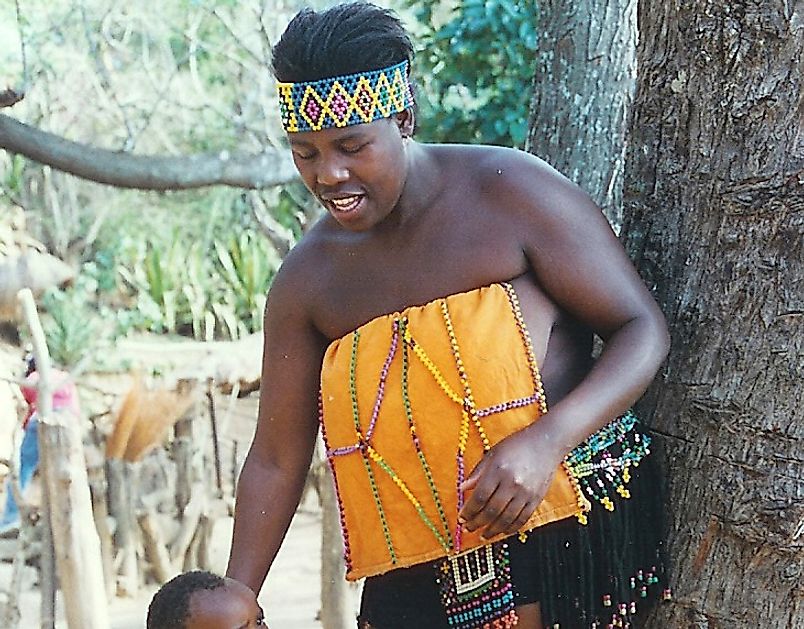Countries Where Newborn Girls Are Least Likely To Live To Age 65

Contributing Factors to Early Deaths Among Females
The reality of high infant mortality rates can be devastating. Less than one third of newborn girls in Swaziland and Lesotho are expected to make it to age 65. This tragic statistic does not only evoke the heartbreaking reality that half of Swaziland babies will die before the age of 1, but the sad truth that less than one third will grow truly old, and many children will be left motherless by high maternal mortality rates as well. HIV/AIDS, police and state corruption, lack of access to modern medical care, malnutrition, and water shortages all contribute to the human rights violations these third world countries face. Women, who are most often poor, are at an extremely high risk of not receiving health care during pregnancy.
Infant and maternal mortality are an important set of statistics, and clear indicators of the standard of health care being practiced in different communities and countries. While a tragedy to the immediate family suffering the loss, the low survival rate also carries implications for the surrounding country. A nation with a low infant and maternal survival rate is considered to be a developing country. Almost half of infant deaths in these developing countries result from poor maternal health and absent or inadequate health care received during delivery. Goals of active charitable organizations include ensuring maternal health during pregnancy, so that disadvantaged mothers give birth to healthy children and recover fully from the challenges of birthing a child. But saving mothers and their infants is only the first step to improving female mortality rates in developing countries. Reliable access to clean water, safe and accessible health care for women in poverty, and creating a safe space for female children to attend school instead of merely working for survival are all key steps towards creating a bright future for these children.
Swaziland
In Swaziland, a monarchy, HIV/AIDS prevalence among female factory workers has led to staffing shortages, and a study of sex workers in Matsapha found 50% to be HIV-Positive. Female sex workers in Swaziland feel forced to engage in risky sexual behavior in order to make extra money, with the cruel claws of poverty ensuring the continued spread of AIDS. Swaziland has the highest HIV prevalence in the world. Virginity testing has been carried out on girls. Without automatic birth registration, a lack of birth certificate can lead to denial of essential public services. Child labor is common. Only 32% of newborn girls will make it to age 65.
Lesotho
Lesotho has the world’s second highest HIV rate, and is one of the only countries in the world where the number of women who die in pregnancy has increased over the last decade. The majority of Lesotho women deliver at home. Most health care facilities are an inaccessibly long walk through mountainous, harsh conditions. With an average distance of 5 hours to reach a hospital, if something goes wrong during delivery, most women will not make it to emergency care before it is too late. 10.5% of young women in Lesotho are living with HIV, a disproportionately high number. Women are twice as likely to be HIV-positive in Lesotho, and 37% of Lesotho women believe there are valid reasons for men to beat their wives. Only 32% of women in Lesotho will make it to age 65.
Sierra Leone
Sierra Leone, a post-conflict country, has the highest child and maternal mortality rates in the world, with only one in four children making it to their fifth birthday. Many cultural practices contribute to these low survival rates, with underage marriage and female genital cutting frequently practiced. However, one of the most harmful cultural practices may deceivingly seem innocuous on paper, and this is the lack of breastfeeding in Sierra Leone. Babies will be given rice water instead of milk as soon as they are born. Without adequate nutritional practices, a child’s start on life is already hindered. Education is a critical step forward in improving survival rates in Sierra Leone, where only 42% of women will make it to age 65.
Is There Hope for Young Girls to Grow Old in These Countries?
Reduction of these tragedies seems simple on paper. Get all women HIV testing to reduce the spread of AIDS. Create accessible prenatal care for isolated, rural communities. Ensure all women have access to a clinic or hospital with appropriate medical care for delivery. However, ensuring access to health care is not the only obstacle standing in the way of improved mortality rate for women. Gender based violence, the social belief that women do not have the right to refuse sex with a man, and cultural barriers to condom use continues to spread HIV. Severely patriarchal systems restrict female access to education. Controlling the HIV epidemic is crucial to making other developmental steps forward.
Countries Where Newborn Girls Are Least Likely To Live To Age 65
| Rank | Country | % of Newborn Girls Projected to Reach Age 65 |
|---|---|---|
| 1 | Swaziland | 32% |
| 2 | Lesotho | 32% |
| 3 | Sierra Leone | 42% |
| 4 | Ivory Coast | 44% |
| 5 | Central African Republic | 46% |
| 6 | Chad | 48% |
| 7 | Nigeria | 48% |
| 8 | South Africa | 49% |
| 9 | Angola | 50% |
| 10 | Mozambique | 50% |











